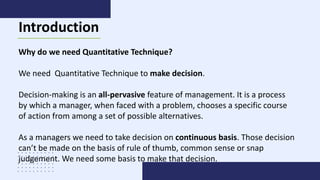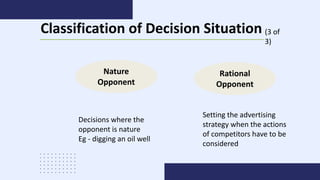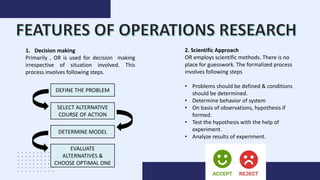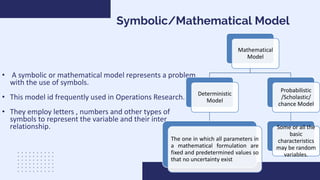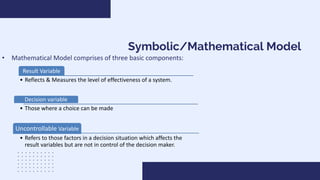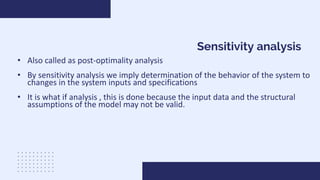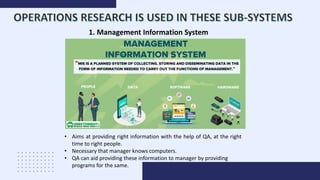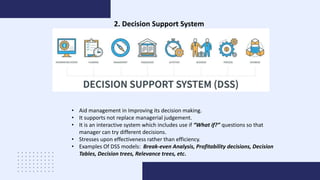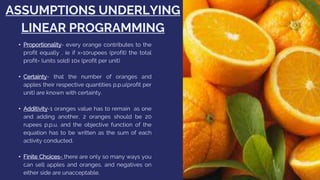This document provides an overview of quantitative techniques and decision making. It discusses (1) why quantitative techniques are needed for decision making, (2) the traditional vs modern approaches to decision making, (3) classifications of decision situations, (4) the historical development of operations research, and (5) the methodology and assumptions of operations research/linear programming. Some key points covered include that quantitative techniques provide a systematic, scientific basis for decision making; classifications include decisions under certainty vs uncertainty; and assumptions of linear programming include proportionality, certainty, additivity, and finite choices.


